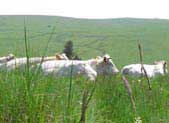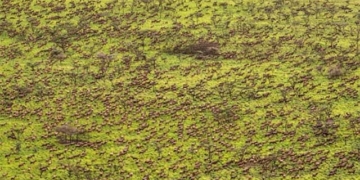 Intelligence, curiosity, confidence, experience, and good communication skills are the key factors that determine which cow can lead the herd.
Intelligence, curiosity, confidence, experience, and good communication skills are the key factors that determine which cow can lead the herd.
Research findings indicate that, at least in this species, the leader does not necessarily need to possess innate leadership qualities, and traits such as selfishness, dominance, size, and strength do not define a true leader.
“The fact that in groups of animals of all ages, the leader is among the oldest individuals shows that to be a leader, one does not need innate qualities but rather extensive experience,” said Bertrand Dumont, the study’s author from the National Institute for Agricultural Research in Saint-Genès-Champanelle, France.
He added, “Usually, leadership ability and dominance do not go hand in hand. In other words, the leader does not have to be the strongest.”
Dumont and his team observed a group of 15 two-year-old heifers at a farm in France. During the day, the herd grazed in a rectangular plot, separated from another plot by a narrow pathway. The second plot contained the type of grass that the cows preferred more.
Whenever the herd was allowed to graze in the new field, Cow No. 7 was always the first to go explore. As this cow moved toward the new area, the other cows paid attention and followed in groups of 2-3.
Dumont believes Cow No. 7 successfully persuaded the entire herd to explore the new grazing area. He explains that the animals must adapt to follow reputable leaders, as this increases their chances of successful foraging.
However, the research team has yet to identify any clear signals that Cow No. 7 emits to lead the herd. Derek Bailey, a researcher at the University of New Mexico, suggests that leading cows often exude confidence and purposeful behavior. Cows do not possess the arrogance typical of humans, so their confidence must stem from genuine intelligence.
“Purposeful movement results from a wealth of knowledge about good foraging locations, and that is the signal for other animals to follow,” Bailey noted.


















































